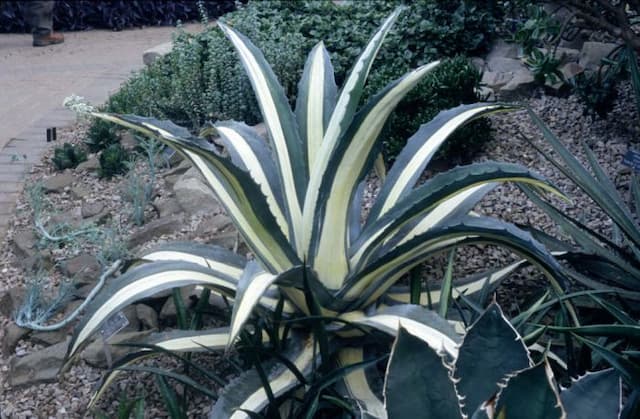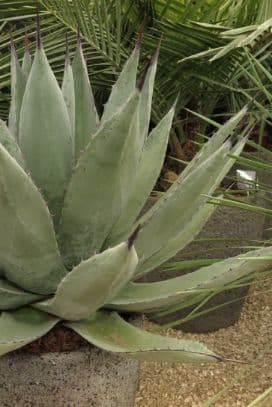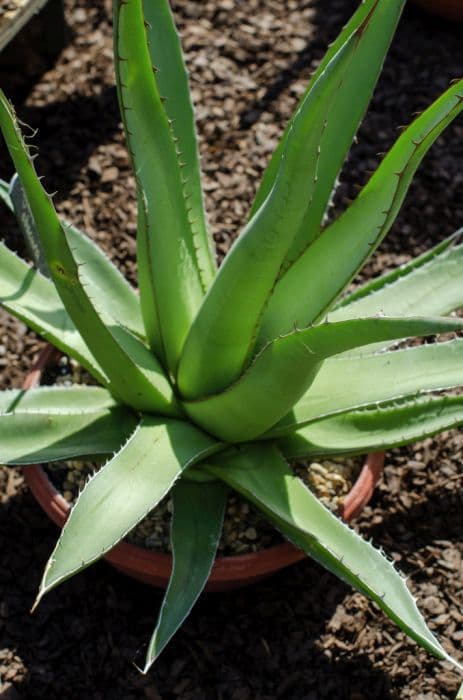Firecracker Flower Dichelostemma ida-maia

ABOUT
The plant commonly known as Firecracker Flower is a striking sight, adorned with clusters of distinctive flowers that resemble flares or little rockets. These blossoms have a rich, vivid red hue with a captivating allure, often outlined with a thin edge of a greenish or bluish tinge. The tubular flowers are long and slender, creating an elegant droop due to their pendulous nature. They emerge from atop erect, leafless stems, which beautifully present the fiery blooms against the backdrop of the foliage below. The foliage consists of narrow, blade-like leaves that are lush and green, forming a basal rosette. These leaves embrace the ground, creating the perfect contrast to the vertical display of the floral fireworks above. When the Firecracker Flower is in bloom, the radiant red combined with the greenery of its leaves brings a vivid splash of color to its surroundings, making it a captivating addition to any garden setting. The plant exudes a wild and natural charm, capturing the essence of a meadow in full bloom.
About this plant
 Names
NamesFamily
Asparagaceae.
Synonyms
Firecracker Flower, Ida-Maia, Indian Potato, Red Pretty.
Common names
Brodiaea ida-maia, Hookera ida-maia, Brevoortia ida-maia
 Toxicity
ToxicityTo humans
The plant commonly known as Firecracker Flower (Dichelostemma ida-maia) does not have a well-documented history of being toxic to humans. There is limited information available regarding its potential toxicity, so caution is advised when handling or ingesting this plant. If any part of the plant is accidentally ingested and symptoms of poisoning occur, it is important to seek medical advice. Symptoms can vary based on the plant and the individual's sensitivity, but can include gastrointestinal upset, such as nausea, vomiting, or diarrhea. It is always prudent to keep unknown plants out of reach from children who might accidentally ingest them.
To pets
Firecracker Flower (Dichelostemma ida-maia) is not commonly listed as toxic to pets, but there is limited information available on its potential effects if ingested. As with any non-food plant, it’s wise to err on the side of caution and prevent pets from ingesting it. If your pet does ingest any part of this plant, monitor them for any changes in behavior or signs of gastrointestinal distress which can include vomiting, diarrhea, and loss of appetite. If such symptoms occur or if you have any concerns about your pet’s health after ingestion of the plant, it is important to consult a veterinarian.
 Characteristics
CharacteristicsLife cycle
Perennials
Foliage type
Deciduous
Color of leaves
Green
Flower color
Red
Height
1-2 feet (30-60 cm)
Spread
6-12 inches (15-30 cm)
Plant type
Bulb
Hardiness zones
7
Native area
North America
Benefits
 General Benefits
General Benefits- Attracts pollinators: Dichelostemma ida-maia, commonly known as Firecracker flower, draws in bees, butterflies, and hummingbirds, which can help pollinate other plants in the garden.
- Low maintenance: The Firecracker flower is known for being drought-tolerant and requiring minimal care once established, making it suitable for low-water gardens and busy gardeners.
- Landscape aesthetics: With its unique and striking red tubular flowers, the Firecracker flower adds aesthetic value and visual interest to gardens and landscapes.
- Wildlife habitat: By providing nectar, the Firecracker flower contributes to the sustenance of local wildlife and supports biodiversity.
 Medical Properties
Medical PropertiesThis plant is not used for medical purposes.
 Air-purifying Qualities
Air-purifying QualitiesThis plant is not specifically known for air purifying qualities.
 Other Uses
Other Uses- Firecracker Flower bulbs are often used by indigenous peoples for fishing; when crushed, they can be thrown into water to stun fish, making them easier to catch.
- The sap from Firecracker Flower stems can be utilized as a natural adhesive in various crafting projects.
- In some traditional communities, the long, thick stems of the Firecracker Flower are used as temporary bindings or twines in construction.
- The dense clusters of the Firecracker Flower can provide modest camouflage for small wildlife, offering a place to hide from predators.
- With its tall and slender stems, Firecracker Flower can be incorporated into floral arrangements for structural support of other flowers.
- The Firecracker Flower's foliage can be used in weaving to create small decorative items like wreaths or as part of a mixed-green backdrop in arrangements.
- Children sometimes use the hollow stems of Firecracker Flower plants to make simple natural straws or blowguns for playing.
- The vibrant colors of Firecracker Flower blooms can be used as a natural dye source for fabrics or art projects.
- Dried seed pods from the Firecracker Flower can be used in rattles or as a percussion instrument in music-making.
- The resilient nature of Firecracker Flower allows it to be used in controlling soil erosion and stabilizing embankments in some landscapes.
Interesting Facts
 Feng Shui
Feng ShuiThe Firecracker Flower is not used in Feng Shui practice.
 Zodiac Sign Compitability
Zodiac Sign CompitabilityThe Firecracker Flower is not used in astrology practice.
 Plant Symbolism
Plant Symbolism- Rarity: The Firecracker flower is relatively uncommon, symbolizing the uniqueness and the preciousness of scarce things in life.
- Energy and Enthusiasm: Its vibrant red and orange colors resemble fireworks, which are often associated with excitement and celebration.
- Vibrancy and Celebration: The resemblance of the flower to exploding fireworks conveys a sense of joy, festivity, and vibrant life.
- Transformation: Blooming in the spring, the Firecracker flower represents change and the beginning of new phases.
 Water
WaterThe Firecracker Plant should be watered thoroughly, allowing the top inch of soil to dry out between waterings. On average, this may mean watering every 7 to 10 days, but frequency can vary with environmental conditions. Provide approximately one to two gallons of water for outdoor plants or 8-16 ounces for smaller indoor pots at each watering session. It is crucial not to let the plant sit in waterlogged soil to prevent root rot. To ensure even moisture distribution, water the plant at the base until excess water drains out of the bottom of the pot or the ground appears sufficiently moist.
 Light
LightFirecracker Plant thrives best in full sunlight to partial shade. The ideal spot for this plant is one where it can receive at least six hours of direct sunlight daily. However, if you live in an area with particularly intense midday sun, providing some afternoon shade will help to prevent the leaves from scorching.
 Temperature
TemperatureFirecracker Plant does best in temperate climates with temperatures ranging between 50°F and 75°F. It can survive minimum temperatures down to around 20°F, but frost can damage the plant. Maximal survival temperatures reach up to 90°F, yet consistently high temperatures may stress the plant. The ideal growing conditions include cool nights and warm days.
 Pruning
PruningPruning the Firecracker Plant is necessary to remove dead or damaged foliage and to encourage bushier growth. Prune lightly after the plant finishes blooming, typically in late summer or early fall. Deadheading spent flowers can also stimulate another round of blooms. Pruning can be done every season or as needed to maintain the desired shape and health of the plant.
 Cleaning
CleaningAs needed
 Soil
SoilThe best soil mix for the Firecracker Flower (Dichelostemma ida-maia) is a well-draining, loamy soil amended with organic matter. The ideal pH for this plant's growth is mildly acidic to neutral, ranging from 6.0 to 7.0. An addition of perlite or sand can improve drainage, helping to prevent root rot.
 Repotting
RepottingFirecracker Flower (Dichelostemma ida-maia) typically does not require frequent repotting and can be repotted every 2-3 years. It's best to repot when the bulbs become crowded or the soil is depleted.
 Humidity & Misting
Humidity & MistingFirecracker Flower (Dichelostemma ida-maia) prefers moderate to high humidity levels, ideally between 40-50%, to thrive well. Avoid placing it in very dry environments.
 Suitable locations
Suitable locationsIndoor
For Firecracker Flower, ensure bright light and good air circulation.
Outdoor
Plant in partial shade, protect from harsh sun and frost.
Hardiness zone
7-10 USDA
 Life cycle
Life cycleDichelostemma ida-maia, commonly known as firecracker flower, begins its life cycle as a bulb, which after planting in the fall, remains dormant until the right environmental conditions initiate growth. In spring, it sends up green, grass-like foliage, followed by the development of a flower stalk that bears the distinctive red, tube-shaped flowers which attract hummingbirds and other pollinators. After the flowering period in late spring or early summer, the plant's blooms give way to seed capsules, which when mature, release seeds for dispersal. Once flowering and seed set are complete, the foliage dies back, and the plant enters a summer dormancy phase, conserving energy within the bulb. The firecracker flower remains dormant through the hot, dry summer and may begin its cycle anew the following spring, depending on environmental cues and availability of water. With each annual cycle, the bulb can gradually enlarge and potentially form offsets, leading to the growth of new plants surrounding the original.
 Propogation
PropogationPropogation time
Spring to early summer
Propogation: Dichelostemma ida-maia, known as Firecracker flower, is commonly propagated through division of its corms. The best time for propagation of the Firecracker flower is in the fall, when the plant is dormant. To propagate, carefully dig up the corms and separate any that have naturally divided during the growing season. These corms can be replanted immediately into well-draining soil with the pointed end facing upwards. The corms should be spaced about 4 to 6 inches (approximately 10 to 15 centimeters) apart and planted at a depth of about 3 inches (around 7.5 centimeters). Ensure the planting site gets enough sunlight and water the corms lightly until they establish. Over time, these will multiply and can be divided again to propagate additional plants.









